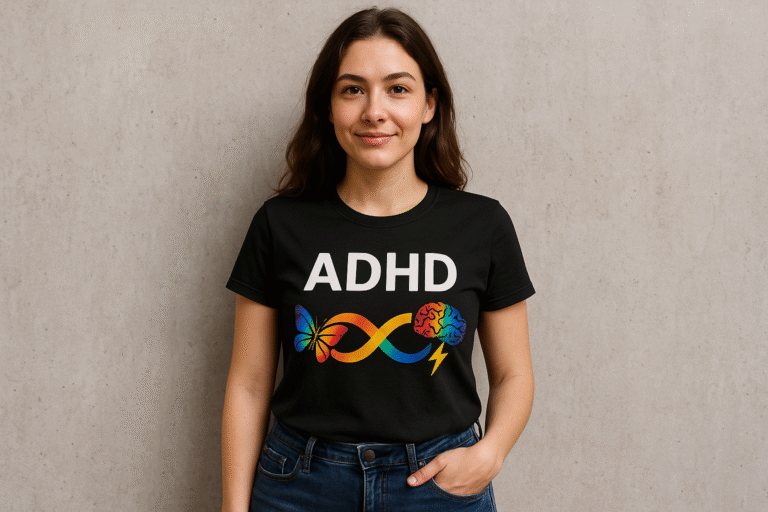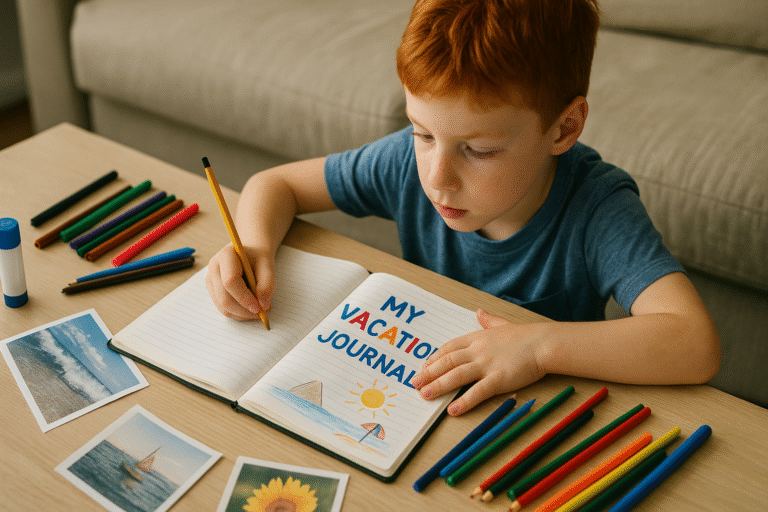ADHD and Sleep in Children: Causes, Effects, and Proven Solutions
Sleep challenges affect up to half of all children with ADHD, turning bedtime into a nightly struggle for families. When your child with ADHD can’t fall asleep, stays restless through the night, or wakes too early, the effects ripple through their entire day—and yours.
Understanding why ADHD and sleep problems go hand-in-hand empowers you to break this exhausting cycle. This guide provides evidence-based solutions that pediatricians recommend, helping your child get the restorative sleep they need for better focus, mood, and behavior tomorrow.
Why Sleep Is a Bigger Issue for Kids With ADHD
Children with ADHD face unique sleep challenges due to brain-chemistry differences, evening “rebound” effects from medication, and lifestyle factors that make falling—and staying—asleep significantly harder than for their peers.
Quick Stats
Research paints a clear picture of how widespread these sleep issues are:
• 25–50% of children with ADHD have chronic sleep problems (compared to 7% in typical children)
• Kids with ADHD lose an average of 1 hour of restorative sleep per night
• 73% of parents report their ADHD child has difficulty falling asleep
• Sleep problems affect 2 out of 3 families dealing with ADHD
(Citations: American Academy of Pediatrics 2019; Sleep Medicine Reviews 2021)
Common Sleep Problems Linked to ADHD
Parents frequently report these five sleep challenges in children with ADHD:
1. Difficulty falling asleep (sleep-onset insomnia) – Your child lies awake for 30-60 minutes or more after lights out, with racing thoughts preventing sleep onset.
2. Bedtime resistance and hyperactivity in the evening – Instead of winding down, your child seems to get a “second wind” right when they should be getting sleepy.
3. Restless movements or periodic limb movement disorder – Constant tossing, turning, or rhythmic leg movements disrupt deep sleep phases throughout the night.
4. Night wakings and early-morning arousals – Your child wakes multiple times between midnight and 5 AM, struggling to fall back asleep.
5. Delayed Sleep-Wake Phase (natural “night-owl” clock) – Their internal body clock shifts later, making 8 PM bedtime feel like asking them to sleep at dinnertime.
Root Causes You Can Address Today
Neurobiological Factors
The same brain differences that cause ADHD symptoms also affect sleep regulation. Dopamine and norepinephrine pathways involved in ADHD directly influence the sleep-wake cycle. Children with ADHD often have:
• Lower levels of sleep-promoting hormones like melatonin
• Difficulty “switching off” alertness systems in the brain
• Heightened sensitivity to environmental stimuli at bedtime
• Altered circadian rhythm regulation
Medication Timing
ADHD medications, while helpful during the day, can significantly impact nighttime sleep patterns. When stimulants wear off after school, many children experience a “rebound” spike in hyperactivity and impulsivity. This rebound effect often coincides with bedtime preparation, making settling down nearly impossible. Additionally, medications still active in the system at bedtime can delay sleep onset by 30-90 minutes.
Lifestyle & Environment
Modern lifestyle factors compound biological sleep challenges:
• Excess evening screen time disrupts melatonin production through blue light exposure
• Irregular daylight exposure confuses the body’s natural sleep-wake signals
• High-sugar snacks close to bedtime cause blood sugar spikes that interfere with sleep onset
• Bedroom clutter creates visual stimulation that keeps ADHD brains in “alert mode”
The Hidden Impact of Poor Sleep on ADHD Symptoms
Sleep deprivation creates a vicious cycle that amplifies ADHD challenges:
Worsened inattention and impulsivity next day – Missing just one hour of sleep can increase ADHD symptoms by 30%, making focus and self-control even harder.
Emotional dysregulation – Sleep-deprived children with ADHD experience more frequent tantrums, mood swings, and emotional outbursts.
Lower academic performance – Poor sleep impairs memory consolidation, making it harder to retain information learned during the day.
Higher parental stress – When children don’t sleep well, neither do parents, leading to decreased family quality of life and increased caregiver burnout.
For daytime strategies to manage these amplified symptoms, see our Classroom Strategies for ADHD article.
Evidence-Based Solutions That Work
1. Fine-Tune Medication Schedule
Working closely with your pediatrician to optimize medication timing can dramatically improve sleep:
• Discuss adding a small late-day booster dose to prevent severe rebound symptoms
• Consider switching to long-acting formulations that provide smoother symptom control
• Review any evening doses of non-stimulant medications for sedating versus activating side effects
• Track sleep patterns for 2 weeks after any medication change to assess impact
2. Create a Predictable Power-Down Routine (30-45 min)
Consistency signals the ADHD brain that sleep is approaching. Implement the same sequence every night:
- Start wind-down 45 minutes before target sleep time
- Follow identical steps: warm shower → comfortable pajamas → quiet reading
- Keep lighting below 30 lux using warm-toned lamps instead of overhead LEDs
- Use visual schedules or checklists to reinforce routine steps
- Maintain this routine even on weekends to strengthen sleep associations
3. Control Light and Screen Exposure
Managing light exposure is crucial for melatonin production:
• Eliminate all screens (gaming, TikTok, YouTube) at least 60 minutes before bed
• Install blue-light filtering apps or enable “night shift” mode after sunset
• Use blackout curtains to ensure complete darkness during sleep hours
• Consider amber-tinted glasses for unavoidable evening screen use
• Replace bright bathroom lights with dimmer alternatives for bedtime routines
[Infographic: Timeline showing optimal screen shutdown times for children with ADHD]
4. Use Bedtime-Friendly Sensory Tools
Sensory strategies can calm the overactive ADHD nervous system:
• Weighted blankets (5-10% of body weight) provide deep pressure that reduces bedtime anxiety
• Lavender aromatherapy through pillow sprays or diffusers promotes relaxation
• White noise machines mask distracting sounds and provide consistent auditory input
• Compression clothing or snug-fitting pajamas offer calming proprioceptive feedback
• Fidget tools specifically designed for bedtime can help discharge excess energy
5. Exercise—but Time It Right
Physical activity profoundly impacts sleep quality when scheduled appropriately:
• Schedule 30 minutes of vigorous play immediately after school to burn excess energy
• Include outdoor time for natural light exposure, boosting melatonin production later
• Avoid intense workouts within 2 hours of bedtime, as they can be overstimulating
• Try calming movement like gentle yoga or stretching during the bedtime routine
• Weekend morning sports can help regulate the sleep-wake cycle
6. Nutrition Tweaks
Strategic eating supports better sleep:
• Offer a high-protein snack (Greek yogurt, almond butter, cheese) 1 hour before bed to stabilize blood sugar
• Eliminate caffeine sources (chocolate, soda, energy drinks) after 3 PM
• Avoid large meals within 2 hours of bedtime to prevent digestive discomfort
• Consider magnesium-rich foods like bananas or nuts, which promote muscle relaxation
• Keep a consistent dinner time to support circadian rhythm regulation
For more ideas, see Healthy Sleep Snacks for Kids – Harvard School of Public Health
7. Consider Melatonin—Under Medical Guidance
When behavioral strategies aren’t enough, melatonin supplementation may help:
• Typical pediatric dose ranges from 1-3 mg, given 60 minutes before desired sleep time
• Start with the lowest effective dose and adjust based on response
• Choose pharmaceutical-grade products to ensure purity and accurate dosing
• Monitor for side effects like morning grogginess or vivid dreams
• Always consult your pediatrician before starting, as melatonin can interact with other medications
When to Seek Professional Help
Contact your pediatrician or request a sleep specialist referral if you notice:
• Snoring, gasping, or breathing pauses suggesting sleep-disordered breathing
• Chronic insomnia lasting more than 3 months despite consistent routine changes
• Severe daytime sleepiness causing your child to fall asleep during activities or school
• Unusual sleep behaviors like sleepwalking, night terrors, or confusional arousals
• Leg pain or uncomfortable sensations preventing sleep onset
Pediatric sleep specialists can conduct overnight polysomnography or use actigraphy watches to identify conditions like obstructive sleep apnea or restless legs syndrome that often co-occur with ADHD.
Frequently Asked Questions About ADHD and Sleep
Does ADHD medication cause insomnia?
Most stimulant medications can delay sleep if they’re still active at bedtime. The key is finding the right balance between daytime symptom control and nighttime sleep. Work with your doctor to adjust timing, dosage, or consider switching to non-stimulant options. Some children benefit from immediate-release formulations that wear off by evening, while others do better with extended-release versions that prevent rebound symptoms.
Are sleep problems a diagnostic sign of ADHD?
No, sleep difficulties are not part of the DSM-5 diagnostic criteria for ADHD, but they commonly co-exist. Studies show that while sleep problems don’t cause ADHD, they occur in up to 70% of children with the condition. The relationship is bidirectional—ADHD makes sleep harder, and poor sleep worsens ADHD symptoms.
Can improving sleep reduce ADHD symptoms?
Yes, research consistently shows that better sleep leads to improved ADHD symptom management. Studies demonstrate that adding even 30 minutes of quality sleep improves attention scores, reduces hyperactivity, and enhances classroom behavior. One study found that extending sleep by 27 minutes per night led to significant improvements in emotional regulation and academic performance.
Is melatonin safe for long-term use in children?
Short-term melatonin use (3-6 months) is generally considered safe for children when used under medical supervision. However, long-term safety data beyond one year is limited. Potential concerns include effects on puberty timing and the body’s natural melatonin production. Always involve a healthcare professional who can monitor your child’s response and adjust treatment as needed.
Key Takeaways
Managing sleep problems in children with ADHD requires patience, consistency, and often a multi-faceted approach:
• Up to half of children with ADHD struggle with chronic sleep issues that significantly impact their daily functioning
• Brain chemistry differences, medication timing, and modern lifestyle factors all contribute to sleep difficulties
• Consistent bedtime routines, reduced evening screen time, appropriate sensory aids, and medical guidance can dramatically improve sleep quality
• Better sleep leads to measurable improvements in attention, behavior, and emotional regulation during waking hours
• Professional help is available when sleep problems persist despite implementing evidence-based strategies
Remember that finding the right combination of strategies takes time. What works for one child with ADHD may need adjustment for another. Track your efforts, celebrate small improvements, and don’t hesitate to seek professional support when needed.
Take Action Tonight
Think your child’s sleep is affecting their ADHD symptoms? Start by tracking patterns to share with your healthcare provider. Download our free “7-Night Sleep Tracker” PDF to record bedtime, wake time, night wakings, and daytime behavior. These insights will help your pediatrician develop a targeted sleep improvement plan tailored to your child’s specific needs.
Quality sleep isn’t just about better nights—it’s about giving your child with ADHD the foundation they need for successful, happier days. With the right strategies and support, peaceful bedtimes and restorative sleep are within reach for your family.





